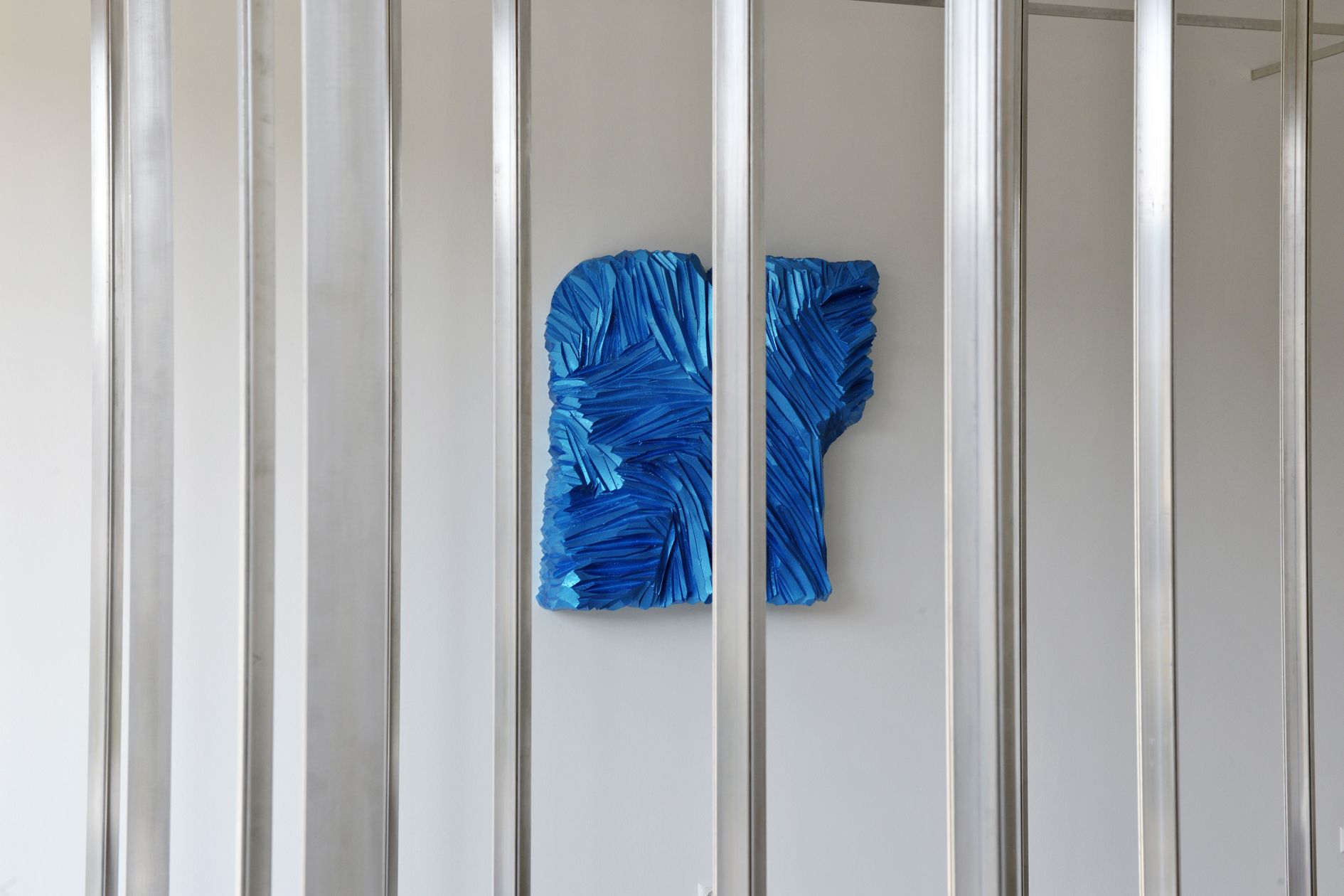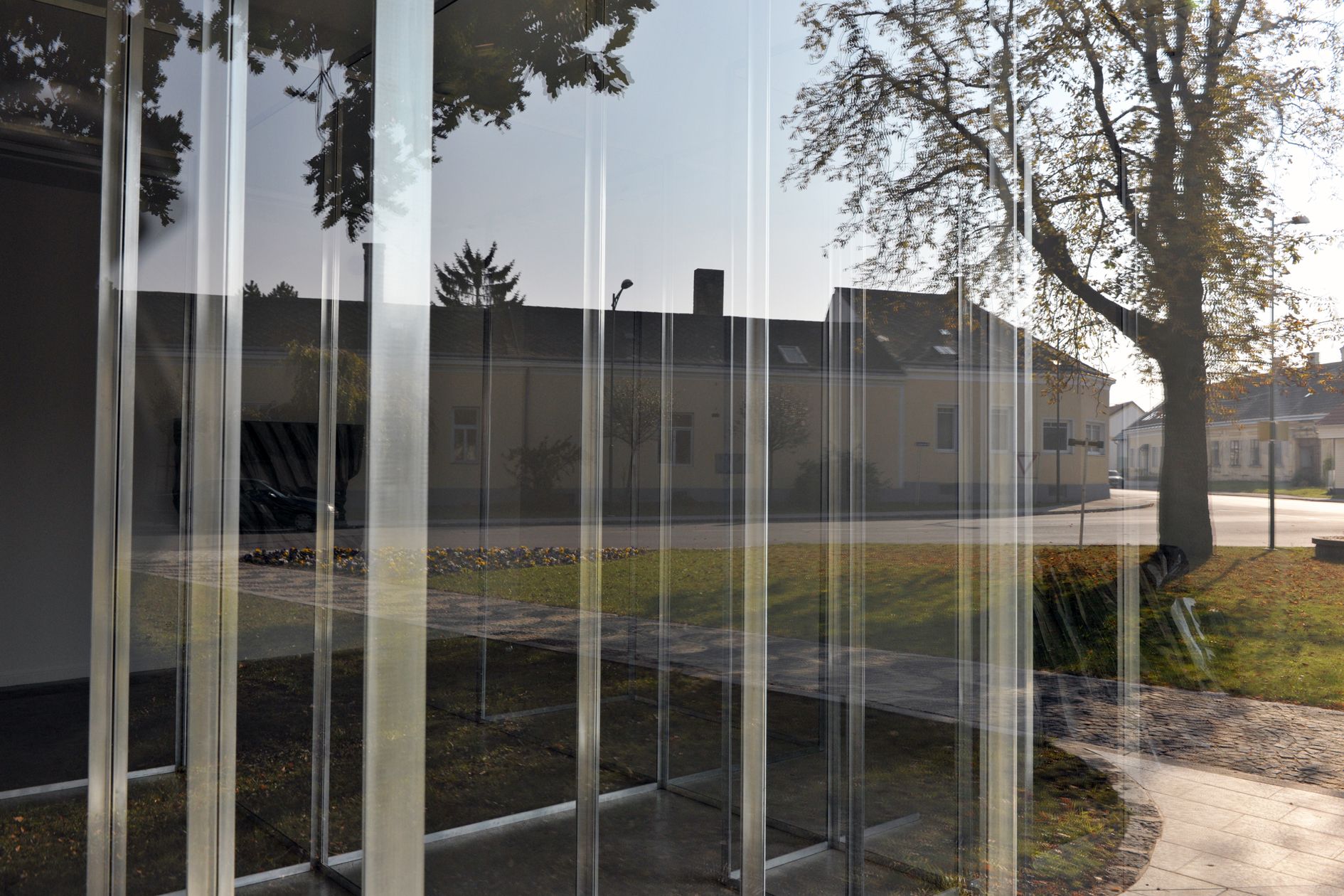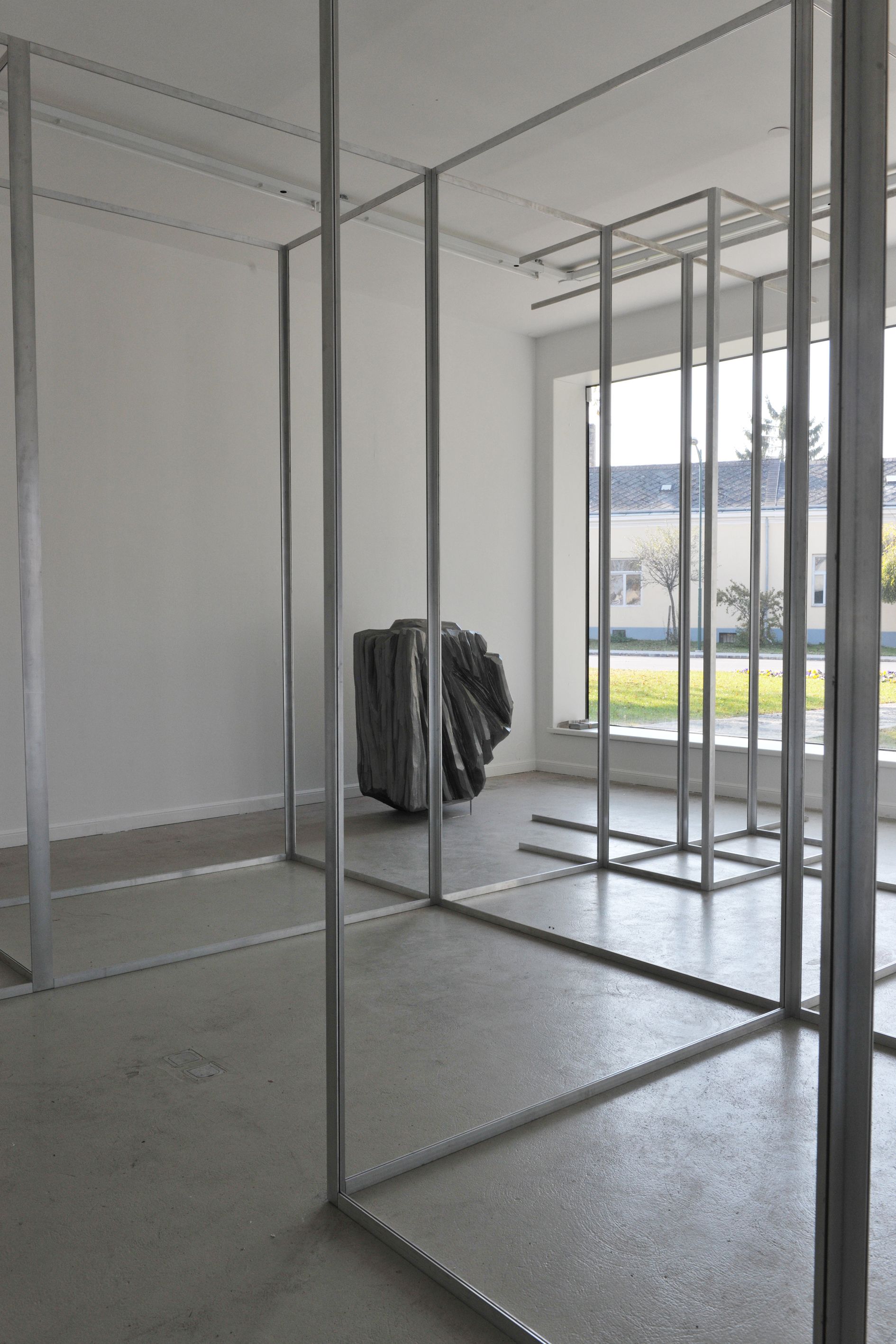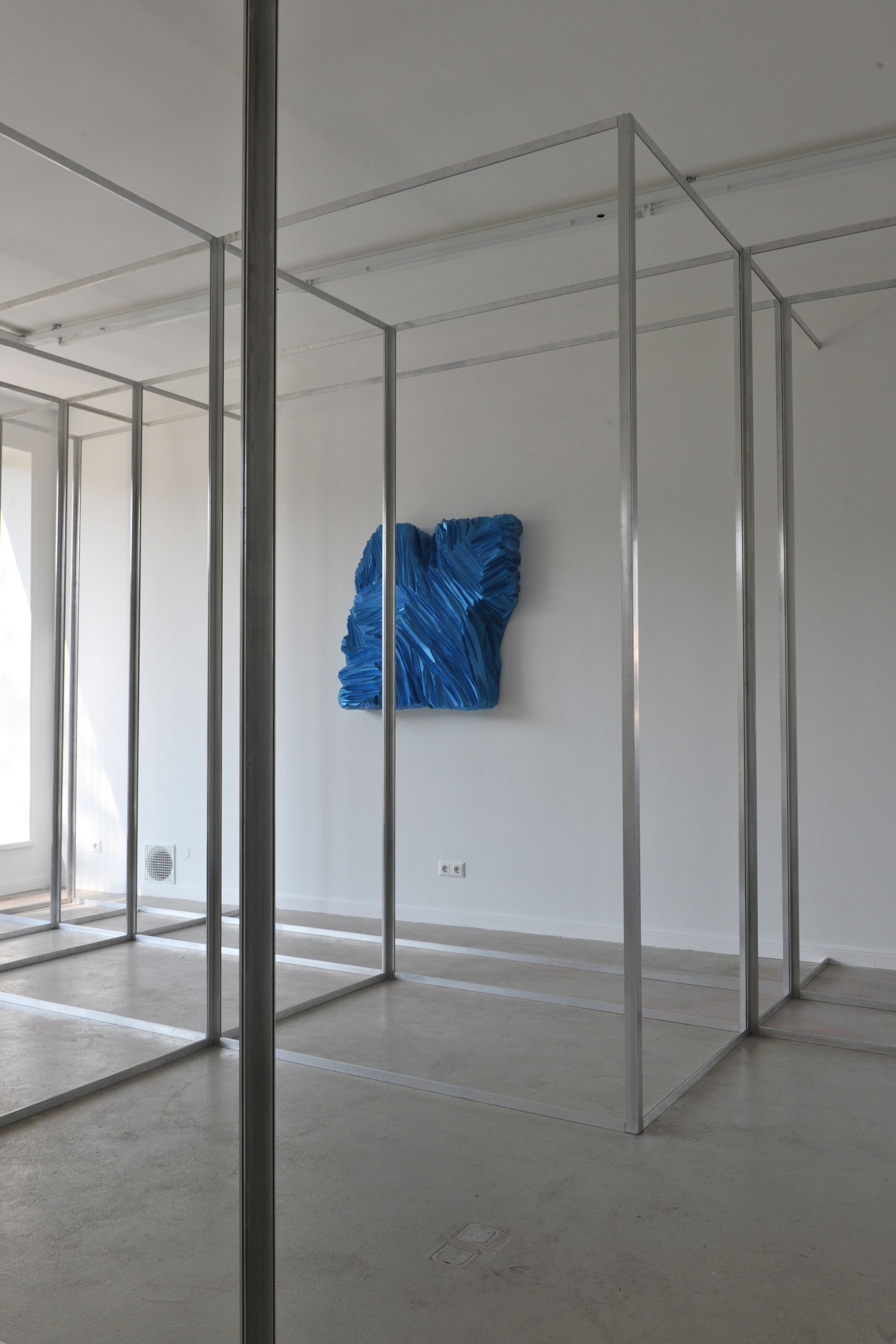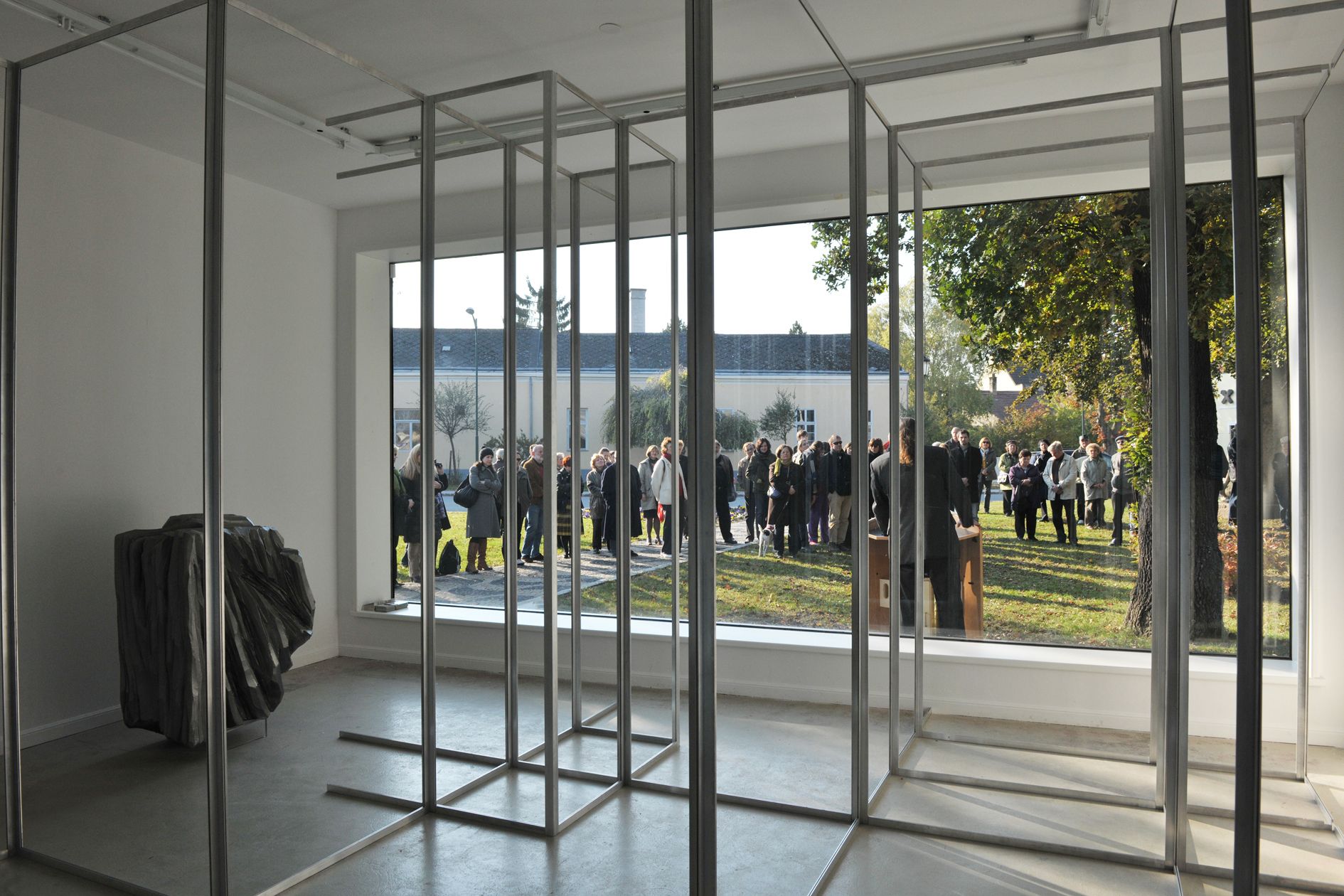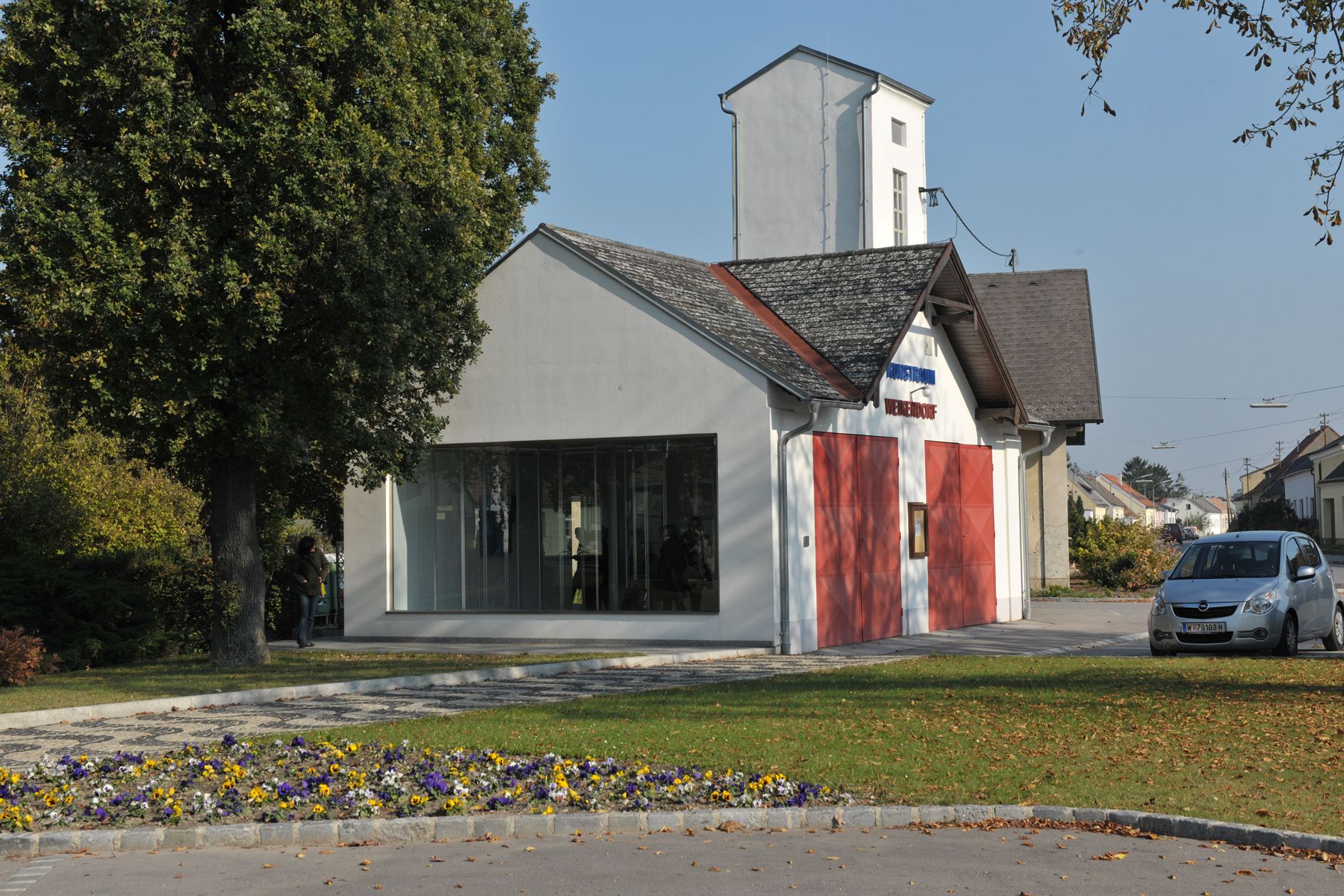Gisela Stiegler,
Markus Wilfling
:
Das Double und sein Theater
Back
Information
After remodeling an old fire station and turning it into an exhibition space for contemporary art, Michael Kienzer invited artists to create temporary installations that would last half a year and would also be visible from the outside through a large window. He thus transformed the entire building into a sculpture in public space.
Having been invited by Michael Kienzer to exhibit at the Kunstraum Weikendorf the artists Gisela Stiegler and Markus Wilfling felt a challenge to refill the 'cleared' square created by their host. This highly exposed artificially created space in the village defines itself for the two colleagues through the removal of the original contents. Reduction, as is so often the case in Michael Kienzer's works, is an essential facet of the artwork Kunstraum Weikendorf. Furthermore, this newly created location is itself a continually changing installation as a result of its being occupied by different artistic positions. In the exhibition DAS DOUBLE UND SEIN THEATER (The double and his theatre) Gisela Stiegler and Markus Wilfling relate their notions of sculpture to one another. Markus Wilfling reduces the entirety of the space into units spatially by inserting aluminium profiling as a contoured grid of frames that subdivide the interior of the art space into segments — like a hall of mirrors. The contours generated geometric views. Markus Wilfling's starting point in developing his sculptures is the idea of creating a setting for the 'emptiness' intrinsic to architecture. The 'frames' provide outlines or continually create further spaces, not only by defining walls but also by evoking a feeling of visual separation. The resulting composite elements are filled with functional contents, like open-plan offices. If one eliminates the contents, a skeletal structure remains. In the Kunstraum Weikendorf, this concept, which runs counter to classical notions of sculpture, serves to generate new spatial situations and new axes along which to view the settings created for the sculptures by Gisela Stiegler. Using carving as a technique, she creates a tactile material quality and a surface structure that contrasts starkly with Markus Wilfling's geometric arrangements. She forms opulent baroque masses out of polystyrene, simulating weight with the coat of paint. In combination with the particular intense colouring of the artificial glossiness of the paints, the traditional activity of carving develops a charged relationship. The use of polystyrene as a raw material allowed Gisela Stiegler to seemingly extend the static limitations of her sculptural forms ad infinitum, combined with the freedom to generate voluminous protrusions.
(Martina Zadrazil)
Images (6)
